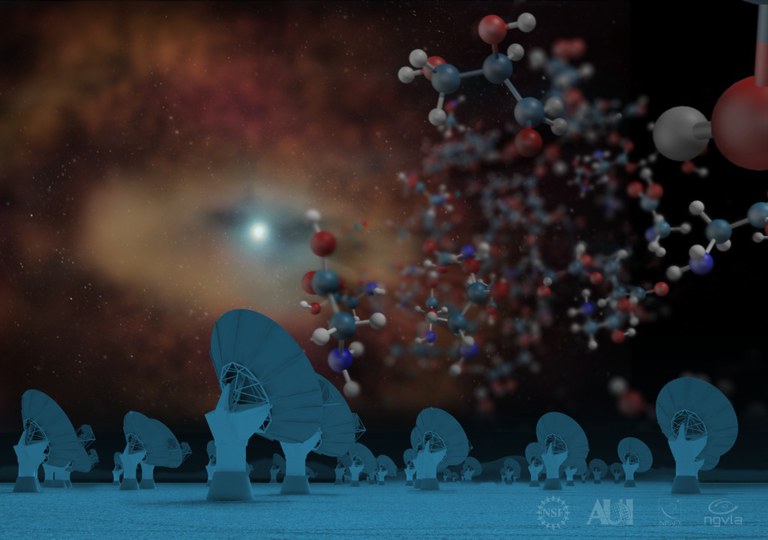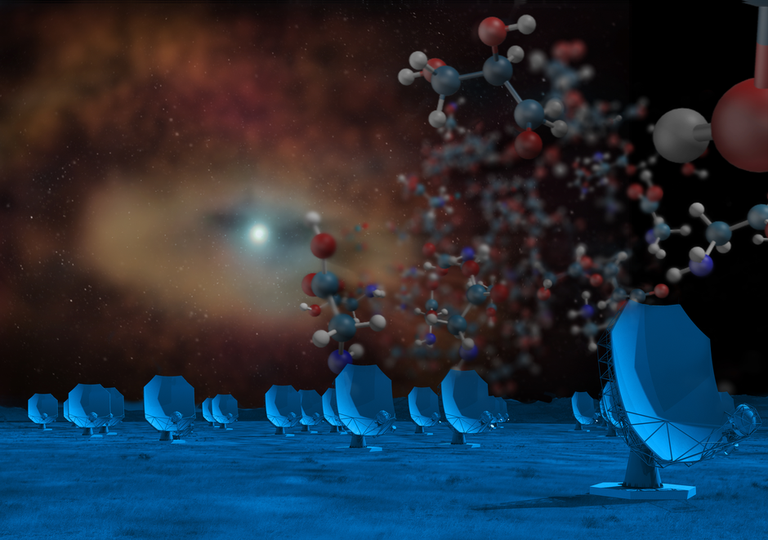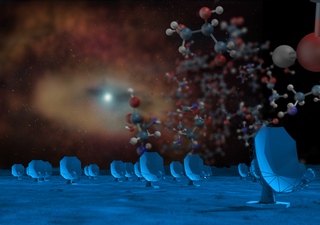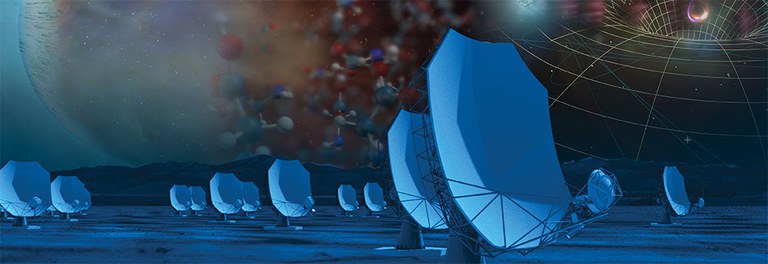239th American Astronomical Society Meeting
NRAO Town Hall
 |
American Astronomical Society winter meeting
|

This NRAO Town Hall will inform the AAS membership about the status of science, science operations, and development programs at the National Radio Astronomy Observatory (NRAO). And opening reception will be followed by brief presentations that will update the membership regarding:
- scientific opportunities and technical development at the Atacama Large Millimeter/submillimeter Array (ALMA), the Karl G. Jansky Very Large Array (VLA), and the Very Long Baseline Array (VLBA);
- recent science results from across the community and the Observatory, including the VLA Sky Survey (VLASS); and
- scientific and technical planning for future radio astronomy research facilities, including a next generation Very Large Array (ngVLA).
The NRAO Town Hall will include time for discussion and answering audience questions.
Speakers
- Tony Beasley (NRAO Director)
- Amy Kimball (VLA Sky Survey)
- Eric Murphy (ngVLA)
ngVLA Special Session: Chemical Probes of Astrophysical Systems
 |
American Astronomical Society winter meeting
|
 Astrochemistry has become a critical investigative tool for a large range of astrophysical studies, spanning Solar System objects to the most distant galaxies. The investigation of extrasolar planetary systems is one of the defining pursuits of contemporary astronomy, using complex chemical tracers to identify the conditions that ultimately lead to habitability. Extraterrestrial amino acids, the chemical building blocks of the biopolymers that comprise life on Earth, are present in meteoritic samples and in comets, but our understanding of the chemical and physical pathways to the formation of (pre)biotic molecules remains incomplete. On galaxy scales, the presence of various molecules and associated isotopes indicate the role of energetic processes (e.g., shock, UV, and cosmic-ray heating) affecting interstellar medium conditions and pathways to the formation of the next generation of stars. While existing facilities are making transformative discoveries by pushing their capabilities to the limit of what can be detected, sample sizes remain small as detections of individual systems are limited to the nearest luminous sources. Informed by these pioneering efforts, next-generation ground- and space-based facilities will deliver large, multi-wavelength surveys that will produce spectroscopic information across the entire electromagnetic spectrum. These data will deliver a much-improved theoretical understanding of the fundamental physics driving the formation of habitable planetary systems as well as the formation and evolution of galaxies over cosmic time.
Astrochemistry has become a critical investigative tool for a large range of astrophysical studies, spanning Solar System objects to the most distant galaxies. The investigation of extrasolar planetary systems is one of the defining pursuits of contemporary astronomy, using complex chemical tracers to identify the conditions that ultimately lead to habitability. Extraterrestrial amino acids, the chemical building blocks of the biopolymers that comprise life on Earth, are present in meteoritic samples and in comets, but our understanding of the chemical and physical pathways to the formation of (pre)biotic molecules remains incomplete. On galaxy scales, the presence of various molecules and associated isotopes indicate the role of energetic processes (e.g., shock, UV, and cosmic-ray heating) affecting interstellar medium conditions and pathways to the formation of the next generation of stars. While existing facilities are making transformative discoveries by pushing their capabilities to the limit of what can be detected, sample sizes remain small as detections of individual systems are limited to the nearest luminous sources. Informed by these pioneering efforts, next-generation ground- and space-based facilities will deliver large, multi-wavelength surveys that will produce spectroscopic information across the entire electromagnetic spectrum. These data will deliver a much-improved theoretical understanding of the fundamental physics driving the formation of habitable planetary systems as well as the formation and evolution of galaxies over cosmic time.
This Special Session will:
- Highlight recent scientific breakthroughs in astrochemistry enabled by current investigations using large optical/IR, (sub-) millimeter, and radio facilities;
- Describe planned near- and long-term improvements for ground- and space-based facilities;
- Discuss major scientific leaps likely to result from next-generation facilities across the electromagnetic spectrum; and
- Review the highest-priority themes in the field of astrochemistry that will be accomplished by the state-of-the-art observatories that will be commissioned in the next decade.
Confirmed Invited Speakers
| Title | Speaker | Affiliation |
|---|---|---|
| Prebiotic Molecules | Brett McGuire | Massachusetts Institute of Technology |
| Organics in the Mid-Planes of Protoplanetary Disks | Kamber Schwarz | University of Arizona |
| Exoplanet Atmospheres | Eliza Kempton | University of Maryland |
| The Chemical Path from Envelope to Planet | Dominique Segura-Cox | University of Texas – Austin |
| The Complex Chemistry of Comets | Stefanie Milam | NASA GSFC |
| Deciphering Galaxy Energetics Through Chemistry | David Meier | New Mexico Tech |
ALMA Special Session: ALMA Status & Plans for Increased Capability
 |
American Astronomical Society winter meeting
|

Beginning early science operations a decade ago in 2011, the Atacama Large Millimeter/submillimeter Array (ALMA) will be in the midst of Cycle 8 observations during the January 2022 American Astronomical Society meeting. Over the past ten years, ALMA has provided unprecedented sensitivity, image fidelity, and resolution at millimeter and submillimeter wavelengths, supporting the research interests of more than 8000 PIs and co-Is. From Solar System objects to the earliest galaxies, ALMA observations have produced breathtaking images and opened new discovery space. ALMA data have been published in 2400+ refereed publications.
This Special Session will describe ALMA news, capabilities, and expectations for ALMA performance and science in the next few years and plans for its upgrade in the 2030 timeframe. In that period, ALMA will complete its frequency coverage of the millimeter window. ALMA's bandwidth will be increased to enhance simultaneous spectral range and continuum sensitivity, even as its line sensitivity is increased via receiver upgrades, an upgraded correlator, and upgrades of the systems connecting them. Higher resolution imaging is being explored, both on the exceptional site and as part of extremely long baseline imaging arrays.
The session will feature science talks presenting a wide range of recent, exciting ALMA science results and will also highlight the support available to the community from the North American ALMA Science Center (NAASC) at the NRAO.
Speakers
- Adam Leroy (Ohio State University): The Cold Gas in Nearby Galaxies: Recent Progress and ALMA's Future Prospects
- Jane Huang (University of Michigan): Unveiling the Birth Sites of Planets: Recent Results and Future Prospects with ALMA
- Alexandra Pope (University of Massachusetts): Decoding the Cosmic Evolution of Galaxies through their Multiphase Interstellar Medium with ALMA, JWST and the Large Millimeter Telescope
The next-generation Very Large Array: Engine of Discovery
 |
American Astronomical Society winter meeting
|

This talk will briefly describe the plans, status, and science enabled by the next generation Very Large Array (ngVLA), a versatile interferometric array envisaged to operate as a facility of the U.S. National Science Foundation, starting in the 2030s. Building on the superb observing conditions and existing infrastructure of the Very Large Array site, the ngVLA will deliver an order of magnitude improvement in sensitivity and angular resolution at frequencies spanning 1.2–116 GHz. The ngVLA will also expand U.S. Very Long Baseline Interferometry capabilities, replacing current Very Long Baseline Array antennas and infrastructure with ngVLA technology and additional stations on 1000 kilometer baselines. The ngVLA will be optimized for observations in the spectral region between the superb submillimeter performance of the Atacama Large Millimeter/submillimeter Array, and the future Square Kilometer Array performance at decimeter and longer wavelengths. The ngVLA will open a vast swath of discovery space and will unveil the formation of Solar System analogs on terrestrial scales; probe the initial conditions for planetary systems and life with astrochemistry; chart the assembly, structure, and evolution of galaxies; use pulsars in the Galactic Center as fundamental tests of gravity; and witness the formation and evolution of stellar and supermassive black holes in this multi-messenger astronomy era.
Presented by: Eric J. Murphy, NRAO, ngVLA Project Scientist













Connect with NRAO